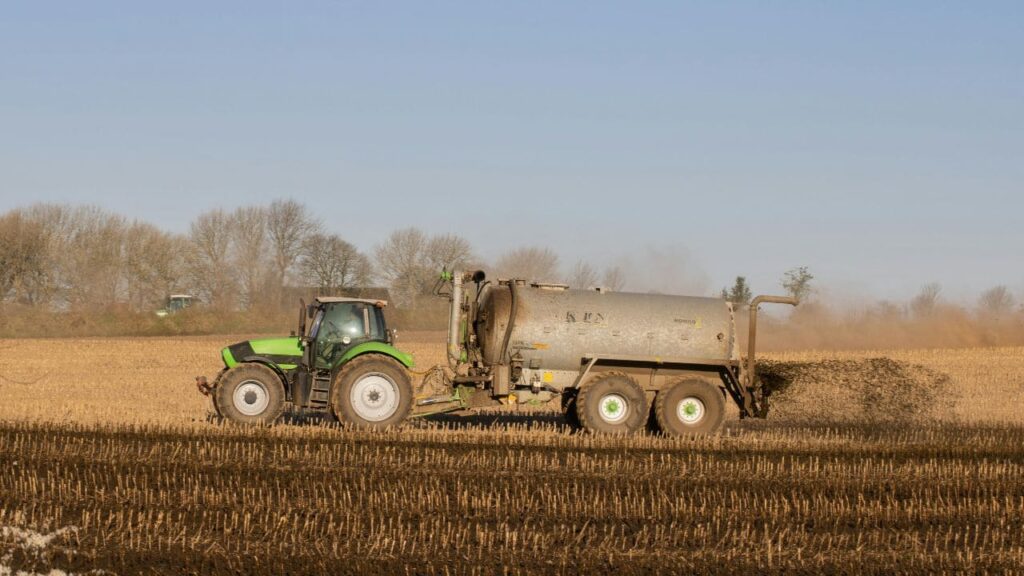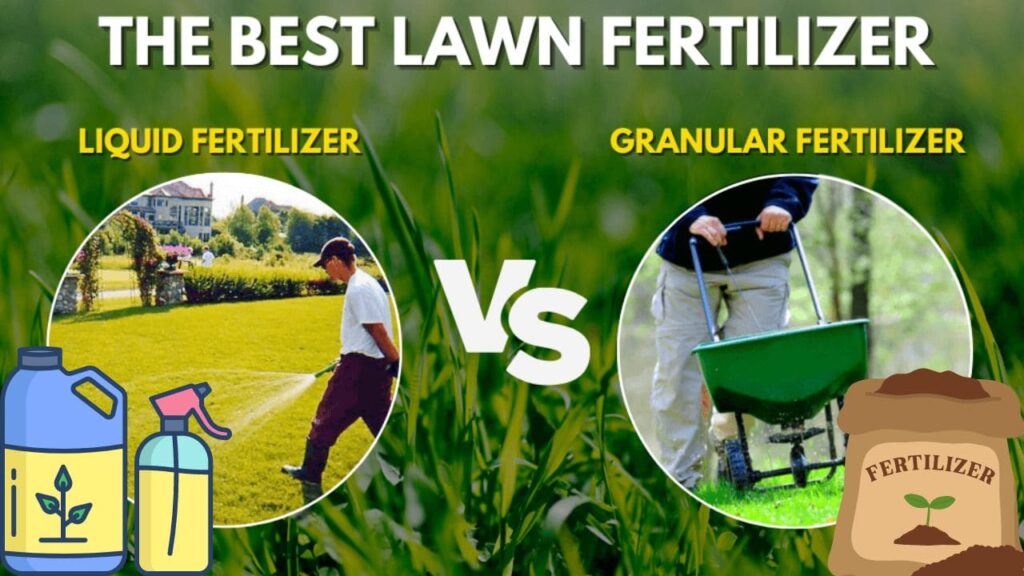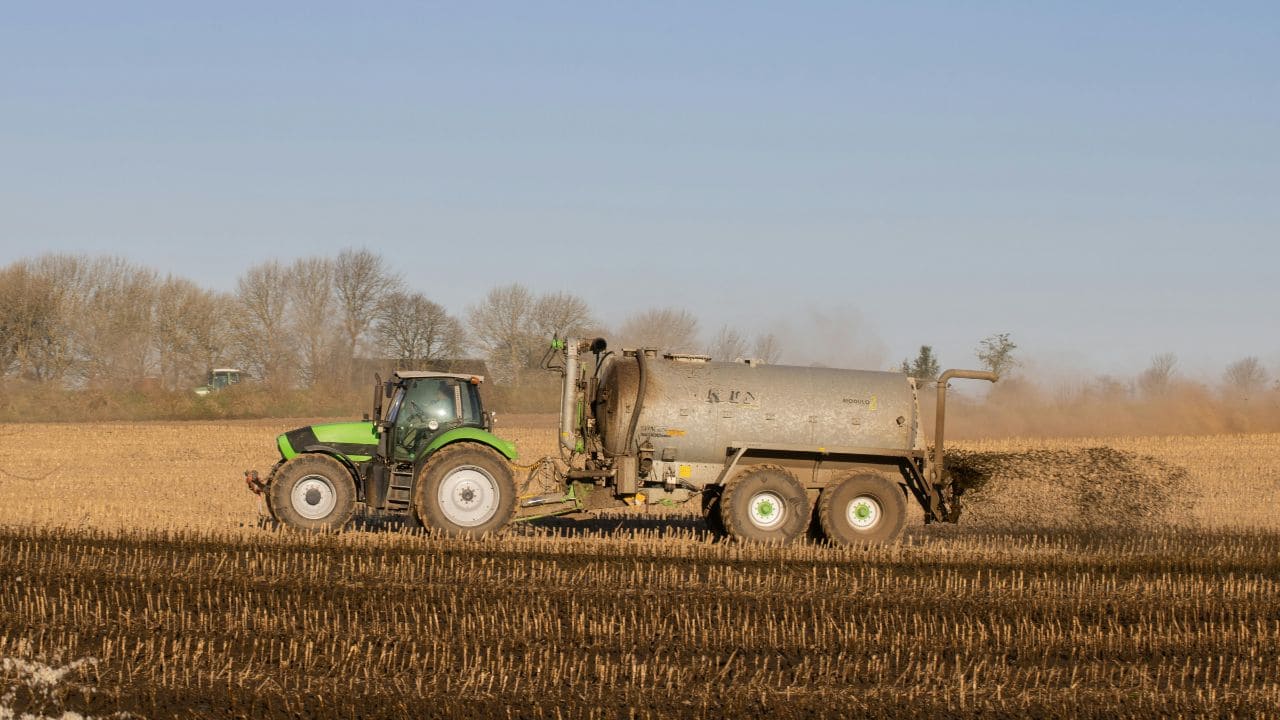As an Amazon Associate, I earn from qualifying purchases
Liquid Vs Granular Fertilizer: Liquid fertilizer is faster-acting and easier to apply, while granular fertilizer is more cost-effective and longer-lasting. Both have their advantages and disadvantages depending on the specific needs of the plants being fertilized.
Choosing between liquid and granular fertilizer can be a challenging decision for gardeners and farmers alike. It’s essential to consider factors such as plant type, soil type, and the desired outcome when deciding which type of fertilizer to use. Liquid fertilizers are more expensive, but they are faster-acting and easier to apply.
On the other hand, granular fertilizers are more cost-effective and can last longer than liquid fertilizers. They are also better suited for large-scale agriculture operations.
We will explore the pros and cons of liquid and granular fertilizers and help you decide which type of fertilizer is best for your plants.

What Is Liquid Fertilizer?
Liquid fertilizer is a water-soluble solution that delivers nutrients to plants in a liquid form. Unlike solid fertilizers, which must break down over time, liquid fertilizers provide nutrients that are immediately available for plants to absorb through their roots or leaves. This makes liquid fertilizers fast-acting and highly effective for quickly addressing nutrient deficiencies or promoting rapid growth.
This method allows for more precise control over how much fertilizer is applied and where it’s distributed, ensuring that plants receive the right amount of nutrients without waste.
Types of Liquid Fertilizer
Synthetic Liquid Fertilizers: These are chemically produced and contain a specific balance of nutrients, often including nitrogen, phosphorus, and potassium (NPK) in various ratios. They are designed to provide plants with an immediate nutrient boost.
Organic Liquid Fertilizers: Made from natural materials like compost tea, fish emulsion, or seaweed extract, organic liquid fertilizers are more eco-friendly and gradually improve soil health while nourishing plants.
Benefits of Liquid Fertilizer
- Fast Nutrient Absorption: Nutrients are immediately available for the plant to absorb, making liquid fertilizers ideal for fast-growing plants or those experiencing nutrient deficiencies.
- Easy Application: It can be applied through the soil or directly onto plant leaves, allowing for targeted feeding.
- Precision Feeding: Liquid fertilizers offer precise control, helping gardeners apply exactly the right amount to specific plants.
Common Uses of Liquid Fertilizer
Vegetable Gardens: Ideal for quick-growing crops that require consistent nutrients.
Flower Beds: Fast-acting liquid fertilizers can help flowers bloom more vibrantly and maintain health.
Lawns: Liquid fertilizer applied to lawns encourages rapid growth and greener grass.
Composition
Liquid fertilizers typically contain a balanced blend of macro and micronutrients essential for plant health. These include nitrogen (N), phosphorus (P), and potassium (K), as well as other micronutrients like iron, zinc, and magnesium.
Application Methods
- Foliar Spray: Spray directly on plant leaves for quick absorption.
- Drip Irrigation: Mix with water and apply through the irrigation system.
- Soil Drench: Pour directly into the soil for root uptake.
Advantages
- Fast Absorption: Plants can quickly take up nutrients for immediate growth.
- Easy Application: This can be applied through various methods with minimal effort.
- Customizable: Formulations can be tailored to specific plant needs.
Disadvantages
- Shorter Residual Effect: Nutrients may leach out faster compared to granular fertilizers.
- Frequent Application: Requires more frequent applications to maintain nutrient levels.
- Storage Challenges: Liquid fertilizers may require special storage conditions to prevent degradation.

What Is Granular Fertilizer?
Granular fertilizers are a solid form of fertilizer composed of small, granules. Slow-release fertilizersSlow-release fertilizers are manufactured in a way. They could supply essential nutrients to plants for a long time manner. Granular fertilizers, unlike liquid fertilizers, do not immediately provide nutrients and take time to break down into the soil as they slowly dissolve releasing the nutrients.
Granular Fertilizer – this slow-release format can be applied annually and comes in a variety of formulations, such as single-nutrient fertilizers (e.g. nitrogen, phosphorus, potassium) or complete fertilizers that contain a balanced ratio of multiple nutrients.
Types of Granular Fertilizers
Synthetic Granular Fertilizers: These are chemically manufactured and designed to provide specific nutrient ratios. They often contain synthetic compounds that release nutrients at a controlled rate.
Granular Fertilizers: Made from natural materials such as compost, manure, or bone meal, organic granular fertilizers improve soil health and provide nutrients more sustainably.
Slow-Release Granular Fertilizers: These fertilizers are coated to control the rate of nutrient release, ensuring that plants receive a steady supply of nutrients over time.
Benefits of Granular Fertilizer
- Long-Lasting Nutrient Supply: Granular fertilizers release nutrients slowly, providing a continuous supply over weeks or months.
- Less Frequent Application: Because of their slow-release nature, these fertilizers typically require fewer applications compared to liquid fertilizers.
- Soil Improvement: Many granular fertilizers contribute to soil health by enhancing soil structure and microbial activity.
Common Uses of Granular Fertilizer
Lawns: Ideal for providing steady nutrients to grass over time, helping maintain a lush green appearance.
Flower Beds: Used to nourish perennial flowers and other plants that benefit from consistent feeding.
Vegetable Gardens: Effective for feeding plants that grow over longer periods, ensuring they have adequate nutrients throughout their lifecycle.
Trees and Shrubs: Granular fertilizers support healthy growth and development in woody plants, promoting strong root systems.
Composition
Granular fertilizers consist of small, solid particles that contain essential nutrients for plants such as nitrogen, phosphorus, and potassium.
Application Methods
- Granular fertilizer is typically applied by hand or using a spreader to evenly distribute the pellets across the soil.
- It can be incorporated into the soil before planting or applied on the surface for existing plants.
Advantages
- Granular fertilizer releases nutrients slowly over time, providing a consistent food source for plants.
- It is easy to store and transport, making it convenient for large-scale agricultural operations.
Disadvantages
- Granular fertilizers may take longer to show results compared to liquid fertilizers.
- It is important to follow application instructions carefully to avoid over-fertilization, which can harm plants.
Nutrient Absorption
Nutrient absorption is a critical process in plant growth, and the type of fertilizer used can significantly impact this process.
Liquid and granular fertilizers differ in their nutrient absorption rates and efficiency, which can influence plant health and soil quality.
Comparison In Plants
Liquid fertilizers are readily available to plants because they are in a form that can be immediately absorbed. The nutrients in liquid fertilizers are in a soluble state, allowing for rapid uptake by plant roots. This quick absorption can lead to faster nutrient delivery to the plant, promoting healthy growth and development.
On the other hand, granular fertilizers release nutrients slowly as they break down in the soil. This gradual release can result in a more sustained nutrient supply to plants over an extended period.
Impact On Soil Health
Liquid fertilizers can have a minimal impact on soil health as they are quickly absorbed by plants and leave little residue in the soil. However, the rapid absorption may lead to potential nutrient leaching if not managed properly, which can affect soil fertility.
Granular fertilizers, due to their slow-release nature, can contribute to soil health by providing a gradual supply of nutrients to the soil. The breakdown of granules can also improve soil structure and organic matter, enhancing overall soil quality.
Environmental Impact
The environmental impact of liquid and granular fertilizers is an important consideration when choosing which type to use in agricultural practices.
Understanding the effects of these fertilizers on the environment can help make informed decisions that minimize negative consequences.
Runoff And Leaching
Excessive use of granular fertilizers can lead to increased runoff, where the fertilizer is washed away by rainwater and ends up in nearby water bodies. This can result in nutrient pollution and cause imbalances in aquatic ecosystems.
Liquid fertilizers, when overapplied, can leach into the soil and eventually contaminate groundwater. This can lead to issues such as nitrate contamination, posing risks to human health and ecosystems.
Impact On Ecosystems
Both liquid and granular fertilizers can have detrimental effects on ecosystems.
- Soil degradation – Overuse of granular fertilizers can lead to soil acidification and reduce its fertility, impacting the ability of the soil to support plant and microbial life.
- Algal blooms – Runoff from both types of fertilizers can contribute to algal blooms in water bodies, leading to oxygen depletion and harm to aquatic organisms.
Cost Analysis
When comparing liquid and granular fertilizers, a crucial aspect to consider is the cost analysis. Let’s delve into the financial implications of using these two types of fertilizers.
Initial Cost
The initial cost of liquid fertilizer is generally higher than granular fertilizer due to packaging and transportation expenses.
Granular fertilizers are usually more affordable upfront as they come in larger quantities and require less handling during application.
Long-term Efficiency
While liquid fertilizers may have a higher initial cost, they can be more cost-effective in the long run as they are more easily absorbed by plants, leading to better nutrient uptake.
On the other hand, granular fertilizers may require more frequent applications to achieve the same level of nutrient absorption, potentially increasing long-term expenses.
Application Efficiency
Application Efficiency: When comparing liquid and granular fertilizers, application efficiency plays a crucial role in determining the effectiveness of the product. Let’s delve into the key factors that contribute to application efficiency.
Effectiveness Over Time
Liquid fertilizers tend to be more immediately available to plants, offering a quick nutrient boost. In contrast, granular fertilizers release nutrients slowly over time, providing a longer-lasting impact.
Precision And Control
Liquid fertilizers offer precise control over the application rate, allowing for accurate dosing. On the other hand, granular fertilizers may require more effort to ensure even distribution.
Suitability For Different Crops
When choosing between liquid and granular fertilizers, it’s crucial to consider the suitability for different crops. Each type of fertilizer has its own advantages and is better suited for specific crops based on various factors such as nutrient requirements, application methods, and adaptability to different soil types.
Crop-specific Considerations
Different crops have varying nutrient needs, and it’s essential to choose a fertilizer that can efficiently deliver the required nutrients. For instance, leafy greens such as spinach and lettuce benefit from nitrogen-rich liquid fertilizers due to their rapid growth and need for quick nutrient uptake. On the other hand, root crops like carrots and potatoes may require phosphorus-heavy granular fertilizers to promote healthy root development.
Adaptability To Soil Types
Soil type plays a significant role in determining the effectiveness of fertilizers. Liquid fertilizers are ideal for sandy soils as they penetrate quickly and provide immediate nutrients. Conversely, granular fertilizers can be more suitable for clay soils as they release nutrients slowly, preventing leaching in heavy soils.
Pros and cons of granular and liquid fertilizers
Pros of Granular Fertilizer
- Long-Lasting Nutrient Release: Granular fertilizers break down slowly over time, providing a steady release of nutrients that can last for several weeks or months.
- Less Frequent Application: Due to their slow-release nature, granular fertilizers typically require fewer applications throughout the growing season.
- Improves Soil Health: Many granular fertilizers also improve soil structure, making them beneficial for long-term soil health.
- Cost-Effective: Granular fertilizers are often more affordable per pound and provide long-term results, making them a cost-effective option for large areas like lawns.
- Easy Storage: Granules are easy to store, have a long shelf life, and are not as prone to degradation as liquid fertilizers.
Cons of Granular Fertilizer
- Potential for Uneven Distribution: It can be difficult to spread granular fertilizer evenly, leading to inconsistent feeding and possible nutrient imbalances.
- Risk of Runoff: Granules can be washed away by heavy rain or improper watering, especially if not well incorporated into the soil.
- Less Control Over Dosage: Adjusting the nutrient levels in specific areas is harder with granular fertilizers compared to liquid fertilizers.
Liquid Fertilizer: Pros and Cons
Pros of Liquid Fertilizer
- Fast-Acting: Liquid fertilizers provide nutrients quickly because they are immediately absorbed by plant roots or leaves, making them ideal for plants in need of immediate nutrient boosts.
- Precise Application: Liquid fertilizers can be easily targeted to specific plants or areas, providing more control over feeding.
- Versatility: They can be applied both to the soil and directly to plant leaves (foliar feeding), giving you multiple options for nutrient delivery.
- Quickly Fixes Nutrient Deficiencies: Liquid fertilizer is ideal for correcting deficiencies or helping stressed plants recover quickly.
- Mix with Pesticides: Many liquid fertilizers can be mixed with pesticides or herbicides, allowing for combined treatments.
Cons of Liquid Fertilizer
- Shorter Duration: Liquid fertilizers provide quick nutrient availability but need to be applied more frequently since they don’t last as long in the soil.
- Higher Cost: Liquid fertilizers tend to be more expensive, especially when considering the frequent applications required.
- Risk of Overfeeding: Since nutrients are immediately available, there’s a greater risk of over-fertilization, which can harm plants or cause nutrient burn.
Conclusion
We know that some liquid fertilizers, some granular fertilizers a few for the garden. In General: If you want quick results and are ok with applying often, liquid fertilizer is a good method to use. Conversely, granular fertilizer will give you good slow even nutrition you only have to apply it two to three times for a year with less effort.
Which is best for your garden likely depends on the needs of your specific plants as well as how you like to garden.
As an Amazon Associate, I earn from qualifying purchases

